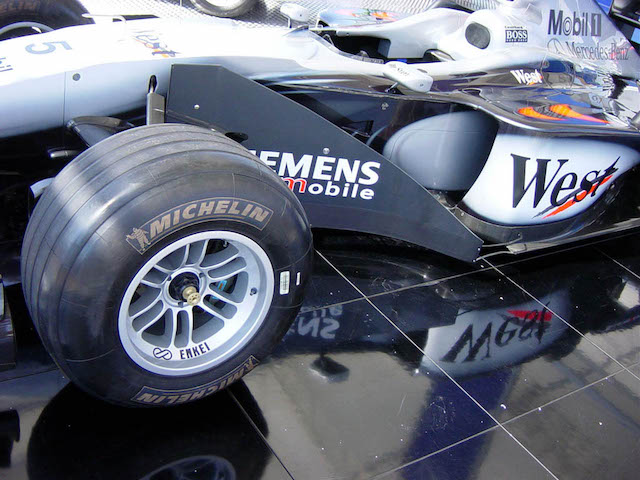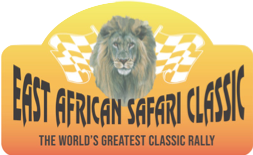F1 Race Car Cannot Thrive In Kenya
Kenya’s aspiration to host an F1 race has been growing for years. The country has made strides in improving its motorsport infrastructure. But hosting a Formula 1 race still remains out of reach. Several challenges prevent Kenya from becoming a venue for F1, despite its rich motorsport history. In contrast, the East African Safari rally stands as a prominent event that showcases Kenya’s motorsport potential. It offers unique opportunities to both local and international fans.
F1 race car challenge
The major barrier to hosting an F1 race car rally in Kenya lies in the country’s current infrastructure. Formula 1 tracks require specific standards for roads, stands, and safety facilities. Many of these facilities are costly and require significant upgrades. The government has made efforts to enhance infrastructure, including roads and transportation systems. However, the scale of investment required for an F1 event is still beyond reach.
F1 races require world-class facilities, including media centers, VIP areas, and paddocks, all of which need to be at the highest international standards. This type of infrastructure is generally not available in Kenya, which further compounds the difficulty of attracting a race. In comparison, the East African Safari Rally, which is held in various regions of Kenya, requires fewer facilities. The rally primarily uses the natural terrain of the country, making it a more sustainable event.
Financial constraints
Hosting an F1 race requires substantial financial investment. The costs involved include track construction or upgrades, security, logistical support, and the overall operation of the event. Even though Kenya has seen impressive economic growth in recent years, these expenses far exceed the available budget allocated to sports. Additionally, Formula 1 events generate significant operational costs, from team logistics to marketing and broadcasting rights.
Kenya does not have the financial backing required to meet the expectations of F1 organizers. The local economy would also face immense pressure from the logistics of hosting a race on this scale. In contrast, the East African Safari Rally is far more manageable from a financial perspective. The rally uses existing roads and requires fewer complex facilities, making it easier to organise.
F1’s strict requirements
Formula 1 is an exclusive and tightly regulated sport. The governing body, the FIA, has a strict set of regulations that must be adhered to in order to host an F1 race. These rules cover everything from safety standards to environmental concerns and technical specifications for the racing venue. Any potential F1 race location needs to meet these conditions, which are challenging to implement in Kenya.
The requirements for a Formula 1 race are demanding in terms of engineering, safety, and environmental considerations. The high level of precision needed in track design, coupled with the safety and medical facilities, often makes hosting an F1 event difficult for many countries. While Kenya has made significant advancements in improving road infrastructure, it still lacks the specialised facilities required by F1’s strict guidelines.
Political and logistical hurdles
Hosting an F1 race also involves intricate political coordination. Government support is a prerequisite for an F1 event, as it includes facilitating visas for international personnel, managing transportation logistics, and overseeing security measures. In Kenya, political instability, though rare, can disrupt these logistics. The complexity of managing an international event on such a large scale requires a high level of coordination between various government agencies, all of which can complicate the process.
In comparison, the East African Safari Rally, a long-established event, benefits from a more robust logistical framework that is already in place. The rally enjoys strong support from local government agencies and national bodies, which helps streamline its organization. The Safari Rally does not face the same political challenges or logistical issues that would be present with a Formula 1 event.
Lack of sponsorship and investment
Formula 1 attracts large sponsorships from global brands. These sponsorships cover a wide range of areas, from track and team sponsorships to media rights and hospitality. For a country like Kenya, attracting such high levels of investment presents a challenge. The lack of exposure to international markets and the small-scale corporate backing for local motorsports further limits the ability to secure substantial sponsorships for a Formula 1 race.
While the East African Safari Rally is not immune to these challenges, it enjoys a strong connection with the local population and international motorsport communities. The rally has been able to attract key sponsors over the years, including global brands that recognize the event’s unique appeal. The Safari Rally’s long history and appeal to rally fans across the world contribute to its success in securing sponsorships, despite the financial hurdles.
Global appeal and Kenya’s motorsport landscape
The global appeal of Formula 1 makes it an attractive event for countries around the world. However, its audience is often limited to those with significant disposable income and global reach. This type of audience might not be fully represented in Kenya, where motorsport fans primarily focus on more accessible events. The focus in Kenya has traditionally been on rally racing, where the emphasis is on endurance and navigating diverse terrains.
The East African Safari Rally taps into a unique niche that resonates with local and regional fans. Unlike the high-speed circuits of Formula 1, the Safari Rally involves drivers overcoming rugged terrain, making it an exciting challenge for competitors. Kenya’s motorsport culture is rooted in rallying, and the Safari Rally embodies this passion. This unique form of racing caters to a different fan base that places value on skill, endurance, and adaptability.
The East African Safari rally’s enduring popularity
The East African Safari rally is more thana motorsport event. it is a part of Kenya’s cultural fabric. Since its inception in 1953, the rally has gained international recognition as one of the most challenging and prestigious motorsport events in the world. Unlike Formula 1, which requires massive financial resources, the rally relies on the natural environment and the expertise of local organizers. This gives Kenya a distinct advantage when it comes to hosting motorsport events.
The rally’s roots in Kenya’s history and its appeal to adventure-seeking fans from all over the world make it a highly anticipated event. Furthermore, it has gained international prestige by being a regular fixture in the World Rally Championship (WRC). This ensures that the East African Safari Rally continues to attract competitors and fans from all over the globe, despite the challenges associated with organising an F1 race.
Rally culture and its connection to Kenya
Rally racing has a long history in Kenya, with the East African Safari Rally being the crown jewel of the nation’s motorsport calendar. The culture surrounding rallying is deeply ingrained in the fabric of Kenyan society. Rally fans follow drivers across remote regions, often braving the elements to witness the thrilling competition. The environment in Kenya is perfectly suited for rallying, offering diverse and unpredictable terrains that test both the cars and their drivers.
While Formula 1 is an exciting spectacle, it cannot replicate the connection that rally racing has with the people of Kenya. The Safari Rally represents more than just a race; it embodies the spirit of adventure, the determination to conquer the elements, and the pride in a local tradition. The success of the Safari Rally highlights the uniqueness of Kenya’s motorsport culture.
Kenya’s motorsport scene
While hosting an F1 race remains out of reach for Kenya, the country’s motorsport scene is still on an upward trajectory. The East African Safari Rally continues to attract international attention, with the potential to grow even further. Kenya is working on enhancing its motorsport infrastructure, which could lead to more events in the future. However, the focus is likely to remain on rallying, where Kenya has a natural advantage.
The development of local motorsports will continue to offer opportunities for young talent, and international partnerships will likely strengthen. As more people take an interest in motorsports, Kenya could one day serve as a hub for motorsport activities in Africa. While Formula 1 may not be in the cards just yet, the future of rallying in Kenya is undoubtedly bright.
A unique motorsport identity
Kenya’s motorsport identity has been defined by the East African Safari rally, a gruelling test of endurance, skill, and resilience. The dream of hosting a Formula 1 race may not be within reach at this time. However, the East African Safari Rally continues to be a symbol of Kenya’s enduring passion for motorsports. This event not only attracts global attention but also fosters a deeper connection between the sport and its Kenyan roots. It represents a future where Kenya remains a vital player in the world of motorsport. This is because the country is grounded in its rich history while looking forward to new horizons.
Expose your brand at the East African Safari Classic Rally05 – 13 December 2025
|






